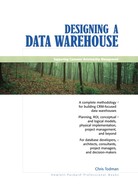SUMMARY
We need a conceptual model for data warehousing in which we can include all the complex aspects of our design, without making the model too complex for users to comprehend. One of the major strengths of the first-generation solutions was its inherent simplicity. However, as we have seen, the industry has moved on and the next-generation data warehouse must evolve to support the kinds of information our users will demand. For a data warehouse to support CRM properly, we need a customer-centric model, which, while using the strengths and benefits of the old behavior-centric solutions, is much more in tune with customers' circumstances, especially their changing circumstances. As we have seen in previous chapters, often it is these changing circumstances that cause a change in customer behavior. We need to be able to analyze these underlying causes if we are to be successful at CRM.
In this chapter we introduced the concept of retrospection. Retrospection provides us with a way of classifying each component of the customers' circumstances so that we can build a full picture of each customer over time.
We also introduced dot modeling. Dot modeling helps us to build a picture of the data warehouse starting with the behavior, the most familiar part, followed by the incorporation of the circumstances, retrospection, dependencies, and everything else we need to describe the business requirements correctly. The main part of the model can be built by the business people themselves under our guidance. We worked through a workshop scenario to show precisely how this might be achieved. Ultimately we end up with a customer-centric model, our GCM, that can be transformed into a logical model. This transformation is the subject of the next chapter.
